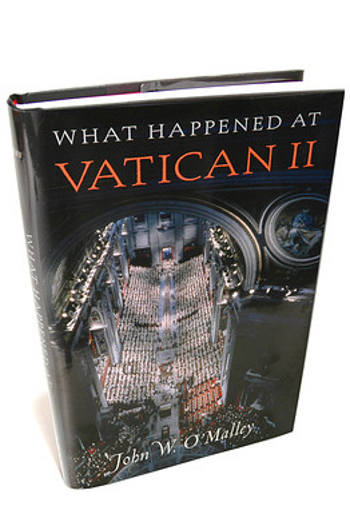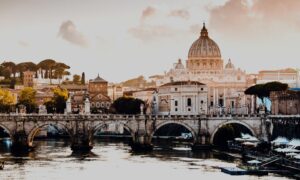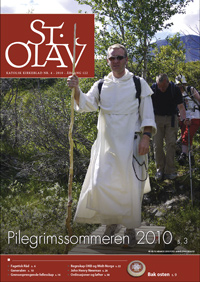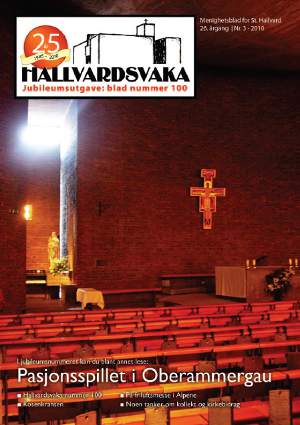Vatikankonsielts dokument om religionsfriheten

Nå har jeg lest ferdig What Happened at Vatican II? av John W. O’Malley, SJ. (jeg nevnte også ganske grundig hvordan han beskriver behandlinga av liturgidolumentet Sacrosanctum concilium – se her). Beskrivelsen av hvordan behandlinga av dokumentet om religionsfriheten (Dignitatis humanæ – se det på norsk her) er ganske interessant, og jeg tar med noen siteter derfra.
Vi er i konsilets fjerde periode, ganske tidlig, i september, og starten av behandlinga av dette dokumentet har ikke vært lett. I USA er alle biskoper (også de mest konservative) for dokumentet, men spesielt i de tradisjonelle katolske land i Europa møter det stor motstand. (Jeg må personlig si at jeg aldri har forstått at dette dokumentet skulle være problematisk.) Slik kan vi lese hos O’Malley:
By that Friday evening, confidence in the viability of the schema had dangerously ebbed even in the Secretariat. No one seriously doubted that it could carry a majority, probably even a two-thirds majority, but Paul VI surely would not promulgate it unless it carried-the council more strongly. Moreover, the pope did not want to appear before the United Nations with four, five, six, or seven hundred bishops on record as opposed to religious freedom. The debate in St. Peter’s was supposed to conclude on Monday. Should a vote on the schema be risked? The question raged behind the scenes the whole weekend.
Within the Secretariat, Bea remained firm in his belief that, come what may, a vote had to be taken, but others in his entourage vacillated. A weak majority in favor would be the equivalent of the death knell. By Monday the moderators favored postponing the vote by simply sending the schema back to the commission for revision in the light of the interventions and then voting on t e revised text later in the Period. But Monday morning came, and no announcement was made.
The interventions on Monday, September 20, revived the hopes of the defenders of the schema. Cardinal Joseph Lefebvre, archbishop of Bourges (to be distinguished from Archbishop Marcel Lefebvre), the first to speak, made a powerful impression by his lucid and systematic analysis of the objections of the opposition. As he said, he wanted to allay the fears of those who felt that they could not in good conscience vote for the schema. He reduced the objections to six points, to each of which he replied in a few words: first, the decree would not foster subjectivism and religious indifference; second, it would not mean that the council abdicated the position that the Catholic Church was the only church of Jesus Christ; third, it would not have a bad effect because of the dissemination of error; fourth, it would not diminish missionary spirit; fifth, it does not exalt human beings at God’s expense; and sixth, it does not contradict the tradition of the church.
According to reports, Lefebvre calmed the minds of some of the wavering, and the next speaker, Cardinal Stefan Wyszyiiski, archbishop of Warsaw and primate of Poland, did the same, more from the authority he had as the Catholic champion against-,the Communist regime than from his eloquence. The fourth speaker that morning, Cardinal Josef Beran, archbishop of Prague, speaking to the council for the first time since his recent release from Communist prison and house arrest, carried even more weight as he put aside abstract reasoning and spoke «from experience.» …
The intervention of Cardinal Agnelo Rossi of Sao Paolo, who offered suggestions for improvement but spoke in favor of the schema in the name of eighty-two Brazilian bishops, also very much helped the cause.21 Here was another vote of confidence and from the country with the largest Catholic population in the world. The differences among the council fathers on this issue could not, therefore, be simply divided between those coming from Catholic countries and the rest.
The pendulum had swung strongly in the direction of the schema. Bea urged the moderators to reconsider, and to that effect he also wrote to the pope. Paul responded by informing Felici that he wanted consideration of Beas request. On that same Monday evening Felici hastily assembled the Council of Presidents, the moderators, and the Coordinating Commission to consider the pope’s communication. The result, after what seems to have been a confused discussion, was negative – that is, not to put the schema to a vote. Bea, it seems, again intervened with Paul VI that evening to order a vote, and for sure Ruffini intervened with him for just the opposite. The situation had reached an impasse, and the next day, no matter what, the council had to move on to discussion of the schema On the Church in the Modern World.
The next day the late arrival in the basilica of Agagianian, Tisserant, and Felici, after Mass, did not go unnoticed. At that point, however, no one knew for sure that they were coming from the papal apartments. Business proceeded as usual, with a few remaining speeches on the schema before the council moved on to its next business. At 10: Agagianian, the moderator for the day, reminded the fathers that they had already heard sixtytwo speeches on the schema. Did they want to terminate discussion? Yes, they did, by a large majority.
With that, De Smedt wound up the proceedings as best he could. Applause. Then Felici, in the name of the moderators, made an electrifying announcement: the fathers were now to vote on the schema. Did it please them to accept this schema as the basis for a definitive version to be presented later? Yes, indeed, it did. The decision to take a vote had been made that morning during a crucial meeting in the papal-apartments.
The fathers completed their ballots, and the speeches began on the next schema. Shortly before the session ended, Felici announced the results of the vote: 1,997 in favor, 224 opposed – a majority of almost 90 percent. The schema had not only survived; it had survived splendidly, revealing that the opponents were a much, much smaller number than the interventions in St. Peter’s suggested.

 Her snakker man altså om at de kan bli tatt opp i Kirken etter bestemmelsene i pave Benedikts dokument «Anglicanorum Cætibus», der de kan tas opp sammen i grupper (prest og menighet) og får beholde noe av sin egen liturgiske tradisjon. (Dvs. sine flotte liturgier, og også (får vi håpe) sine flotte kirker og altere – se bildet over.)
Her snakker man altså om at de kan bli tatt opp i Kirken etter bestemmelsene i pave Benedikts dokument «Anglicanorum Cætibus», der de kan tas opp sammen i grupper (prest og menighet) og får beholde noe av sin egen liturgiske tradisjon. (Dvs. sine flotte liturgier, og også (får vi håpe) sine flotte kirker og altere – se bildet over.) 
 Nokså nylig er det kommet ut et nytt nummer av
Nokså nylig er det kommet ut et nytt nummer av 
